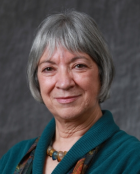Why We Are Still Social
We can formalize the model (Table 1). The central thesis is that face-to-face group living functioned in the past—and continues to function—as an interface between individual and habitat. The four configurations—dyad, task group, band and macroband—are organized as a nested hierarchy. (This is a structural hierarchy, not to be confused with political hierarchy.) Each group configuration allows specialized cognitive functions to evolve and also presents coordination problems that are different from other levels. The dyad affords possibilities for micro-coordination (e.g., facial imitation in a mother-infant dyad, the automatic adjustment of gait that occurs when two people walk together, the interaction between a trainer and an animal). The task group affords possibilities for distributed cognition, which refers to shared cognitive tasks such as perception, classification, inference and contextually-cued response. The band affords a shared construction of reality—“common knowledge”—that also mediates interaction in macrodemes and other superordinate group configurations. Macrobands afford the stabilization and standardization of language, signs and symbols. The specialized functions of these core configurations are hypothesized to be recurrent across generations, across cultures and in development. Core configurations would also differ in how deeply entrenched they are. Dyads are deeply entrenched because of their special role in reproduction, including infant development. A dramatic change affecting their evolved functions should predict mostly poor developmental outcomes. In contrast, macrodemes are shallowly entrenched and are relatively easy to modify. While modern urban humans don’t live in bands or macrobands anymore, we do have crosscutting groups of similar sizes having various agendas, utilizing its functional specialties.
Science is an interesting illustration. In both instances—in science and among hunter-gatherers—group-size numbers at these levels are fairly constant: dyads, groups of about 3-5 individuals, 30-50 individuals, and 100-500 individuals (Birdsell, 1972; Hull, 1988). In both cases, isolates have reduced viability (isolated scientists publish less), and must be part of a subgroup with sufficient "critical mass" to persist. Similarities of function also exist in the organizational structures of scientists and hunter-gatherers. Learning to fashion specialized tools, in stone or other materials, or to use specialized laboratory techniques, such as blowing a glass pipette, is typically a dyadic, hands-on, situated activity. Becoming skilled at these tasks requires learning and feedback from materials, equipment, and an experienced mentor. A specialty of both small research groups and small foraging parties appears to be interpreting ambiguous stimuli such as an animal track on a trail or a proton track on a photo. In hunter-gatherer task groups, food from the hunt is often brought back to the domestic base and shared in the band. Among scientists, research results and their interpretation are brought back to the “conceptual band” in the form of workshops and small intimate conferences. In hunter-gatherer macrobands and yearly scientific conferences, young people are exchanged, disgruntled people find new group membership, specialized languages are standardized, and myths, gossip and information about more distant areas and groups are exchanged. Macrodemes are also the prototypic forerunner of ethnic groups (Brewer & Caporael, 2006).
From a developmental perspective, obviously every human is born into a dyad of child and caregiver, which is itself a component of a group. Groups have rules and practicesthat affect the survival and potential reproduction of their members. Some cultures practice infanticide of strong, healthy babies; others practice state-of-the-art medicine to save premature newborns. As the newborn that survives birth develops, he or she participates in a widening scope of group activity, which also influences survival and reproduction and the beginning of a new cycle. We think of infants becoming increasingly independent as they develop. What happens in practice, however, is that they become increasingly interdependent. Very young infants interact with a single caregiver at a time; as they get older and they achieve better control over their bodies, they interact with families and small playgroups. The classroom is typically an even larger group, about the size of a band, and by high school and the beginning of work life students easily recognize themselves as part of a larger group contexts, say, of the Amsterdam High School student body macroband, which is itself part of a school district in a town in a county in a region in a country. Unlike many other mammals, the expansion of interdependency distinguishes the human adult from the juvenile.

